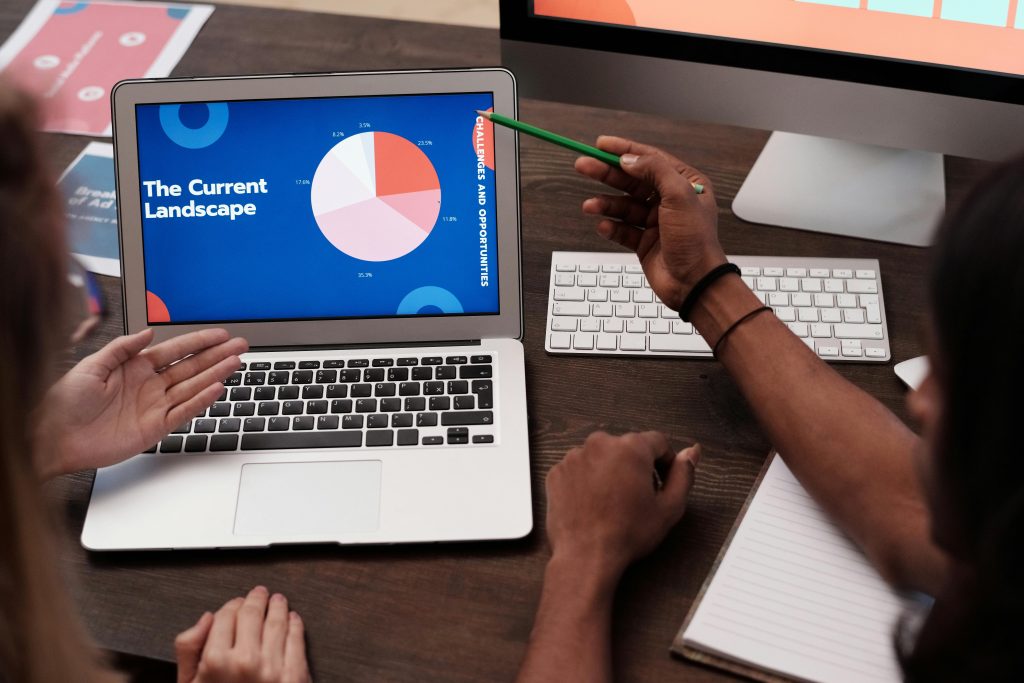The Future of Import and Export in a Digital World
The global trade landscape is undergoing a seismic shift, driven by the rapid adoption of digital technologies. From blockchain to artificial intelligence (AI), digital innovations are transforming how businesses import and export goods, making processes faster, more transparent, and cost-effective. The Ambani Group has been at the forefront of this digital revolution, leveraging cutting-edge technologies to streamline global trade operations.
This article explores the future of import and export in a digital world, highlighting key trends, challenges, and opportunities. We’ll also delve into how the Ambani Group is adapting to these changes to deliver efficient and innovative trade solutions.
Challenges in the Digital Transformation of Trade
The digital transformation of global trade offers immense opportunities for businesses to enhance efficiency, transparency, and profitability. However, this transformation is not without its challenges. From cybersecurity risks to regulatory complexities, businesses must navigate a myriad of obstacles to fully leverage digital technologies. Here’s an in-depth exploration of the key challenges in the digital transformation of trade:
1. Cybersecurity Risks
As trade processes become increasingly digital, they also become more vulnerable to cyberattacks. Protecting sensitive data and ensuring the integrity of digital systems is a top priority for businesses.
Key Concerns:
- Data Breaches: Unauthorized access to sensitive information, such as customer data and financial records, can lead to significant financial and reputational damage (Czinkota et al., 2021).
- Ransomware Attacks: Cybercriminals may encrypt critical data and demand a ransom for its release, disrupting operations and causing financial losses (WTO, 2023).
- Phishing Scams: Fraudulent attempts to obtain sensitive information, such as login credentials, can compromise digital systems (Brynjolfsson & McAfee, 2014).
Mitigation Strategies:
- Implement robust security measures, such as firewalls, encryption, and multi-factor authentication (Czinkota et al., 2021).
- Conduct regular security audits to identify and address vulnerabilities (WTO, 2023).
- Educate employees on cybersecurity best practices to prevent phishing and other attacks (Brynjolfsson & McAfee, 2014).
Example: A logistics company experienced a ransomware attack that encrypted its shipment data, causing delays and financial losses. By implementing robust cybersecurity measures, the company prevented future attacks (Czinkota et al., 2021).

2. Regulatory Compliance
Different countries have varying regulations regarding digital trade, including data privacy laws, e-commerce standards, and customs requirements. Navigating these regulations can be complex and time-consuming.
Key Concerns:
- Data Privacy Laws: Regulations like the General Data Protection Regulation (GDPR) in the EU impose strict requirements on the collection, storage, and processing of personal data (WTO, 2023).
- E-Commerce Standards: Countries may have specific requirements for online transactions, such as consumer protection laws and digital signatures (Czinkota et al., 2021).
- Customs Regulations: Digital trade must comply with customs regulations, including documentation requirements and tariff classifications (WTO, 2023).
Mitigation Strategies:
- Stay informed about updates to trade regulations through official sources like the World Trade Organization (WTO) and local customs authorities (WTO, 2023).
- Consult legal experts to ensure compliance with local and international laws (Czinkota et al., 2021).
- Implement compliance software to automate processes and reduce the risk of errors (Brynjolfsson & McAfee, 2014).
Example: An e-commerce company faced penalties for non-compliance with GDPR. By consulting legal experts and implementing compliance software, the company avoided future penalties (Czinkota et al., 2021).

3. High Implementation Costs
Adopting digital technologies requires significant investment in infrastructure, software, and training. This can be a barrier for small and medium-sized enterprises (SMEs) with limited resources.
Key Concerns:
- Infrastructure Costs: Upgrading IT systems and adopting technologies like blockchain and IoT can be expensive (WTO, 2023).
- Software Licensing: Purchasing and maintaining software licenses can add to the overall cost (Czinkota et al., 2021).
- Training Expenses: Training employees to use new technologies can be time-consuming and costly (Brynjolfsson & McAfee, 2014).
Mitigation Strategies:
- Prioritize investments in technologies that offer the highest return on investment (ROI) (WTO, 2023).
- Leverage cloud-based solutions to reduce infrastructure costs (Czinkota et al., 2021).
- Explore funding options, such as government grants and venture capital, to support digital transformation initiatives (Brynjolfsson & McAfee, 2014).
Example: A small exporter invested in cloud-based inventory management software, reducing infrastructure costs and improving efficiency (Czinkota et al., 2021).

4. Digital Divide
Not all countries and businesses have equal access to digital technologies, creating disparities in the global trade ecosystem.
Key Concerns:
- Limited Internet Access: In some regions, limited internet access hinders the adoption of digital technologies (WTO, 2023).
- Lack of Infrastructure: Poor infrastructure, such as unreliable electricity and transportation networks, can impede digital transformation (Czinkota et al., 2021).
- Skill Gaps: A lack of digital skills among employees can hinder the effective use of new technologies (Brynjolfsson & McAfee, 2014).
Mitigation Strategies:
- Collaborate with governments and private sector organizations to improve digital infrastructure (WTO, 2023).
- Invest in training programs to enhance digital skills among employees (Czinkota et al., 2021).
- Leverage mobile technology to reach underserved regions and populations (Brynjolfsson & McAfee, 2014).
Example: A trade association partnered with a telecom company to provide internet access to rural exporters, enabling them to participate in global trade (Czinkota et al., 2021).

5. Resistance to Change
Many traditional businesses are hesitant to adopt digital technologies due to a lack of understanding or fear of disruption.
Key Concerns:
- Cultural Resistance: Employees may resist changes to established processes and workflows (WTO, 2023).
- Fear of Job Loss: Automation and digital technologies may lead to concerns about job security (Czinkota et al., 2021).
- Lack of Awareness: Some businesses may not fully understand the benefits of digital transformation (Brynjolfsson & McAfee, 2014).
Mitigation Strategies:
- Implement change management strategies to address resistance and build a culture of innovation (WTO, 2023).
- Involve employees in the digital transformation process and provide training to ease the transition (Czinkota et al., 2021).
- Showcase the benefits of digital technologies through pilot projects and case studies (Brynjolfsson & McAfee, 2014).
Example: A manufacturing company faced resistance from employees when implementing an AI-powered inventory management system. By involving employees in the process and demonstrating the benefits, the company successfully overcame resistance (Czinkota et al., 2021).

6. Interoperability Issues
Different digital systems and platforms may not be compatible, creating challenges for seamless integration and data exchange.
Key Concerns:
- Data Silos: Incompatible systems can lead to data silos, hindering collaboration and decision-making (WTO, 2023).
- Integration Costs: Integrating disparate systems can be costly and time-consuming (Czinkota et al., 2021).
- Standardization: Lack of standardization in digital technologies can create interoperability issues (Brynjolfsson & McAfee, 2014).
Mitigation Strategies:
- Adopt open standards and protocols to ensure compatibility between systems (WTO, 2023).
- Invest in middleware and integration platforms to connect disparate systems (Czinkota et al., 2021).
- Collaborate with technology providers and industry partners to develop interoperable solutions (Brynjolfsson & McAfee, 2014).
Example: A logistics company integrated its IoT-enabled tracking system with its ERP software, enabling real-time visibility and improving efficiency (Czinkota et al., 2021).

7. Data Privacy and Ethical Concerns
The use of digital technologies raises concerns about data privacy and ethical practices.
Key Concerns:
- Data Misuse: Sensitive data may be misused or shared without consent, leading to privacy violations (WTO, 2023).
- Ethical AI: AI algorithms may exhibit bias or make unethical decisions, raising ethical concerns (Czinkota et al., 2021).
- Transparency: Lack of transparency in digital processes can erode trust among stakeholders (Brynjolfsson & McAfee, 2014).
Mitigation Strategies:
- Implement data governance frameworks to ensure the ethical use of data (WTO, 2023).
- Use transparent algorithms and provide clear explanations of digital processes (Czinkota et al., 2021).
- Follow ethical guidelines and best practices for the use of digital technologies (Brynjolfsson & McAfee, 2014).
Example: A retailer implemented a data governance framework to ensure the ethical use of customer data, building trust and loyalty (Czinkota et al., 2021).

The Future of Import and Export: Key Trends to Watch
As digital technologies continue to evolve, several trends are shaping the future of global trade. Here’s a closer look at what businesses can expect:
- Smart Contracts Smart contracts, powered by blockchain, are set to revolutionize trade agreements. These self-executing contracts automatically enforce terms and conditions, reducing the need for intermediaries and speeding up processes (WTO, 2023).
- Digital Twins Digital twins virtual replicas of physical assets are transforming supply chain management. By simulating real-world scenarios, businesses can optimize operations and reduce costs (Czinkota et al., 2021).
- 5G Connectivity The rollout of 5G networks will enhance the speed and reliability of digital trade processes. With faster data transmission and lower latency, businesses can achieve real-time visibility and communication (Brynjolfsson & McAfee, 2014).
- AI-Driven Customs Clearance AI-powered systems are being developed to automate customs clearance, reducing delays and improving efficiency. These systems can analyze vast amounts of data to identify potential risks and streamline processes (WTO, 2023).
- Sustainable Trade Practices Digital technologies are enabling businesses to adopt more sustainable practices, such as carbon footprint tracking and ethical sourcing (Czinkota et al., 2021).
Practical Tips for Businesses Embracing Digital Trade
For businesses looking to adapt to the digital transformation of global trade, here are some actionable tips:
- Invest in Digital Infrastructure: Upgrade your IT systems and adopt technologies like blockchain, AI, and IoT (WTO, 2023).
- Prioritize Cybersecurity: Implement robust security measures to protect sensitive data and systems (Czinkota et al., 2021).
- Stay Compliant: Keep up-to-date with digital trade regulations in your target markets (Brynjolfsson & McAfee, 2014).
- Leverage E-Commerce: Use online platforms to expand your reach and streamline operations (WTO, 2023).
- Train Your Team: Equip your employees with the skills needed to navigate the digital trade landscape (Czinkota et al., 2021).
- Collaborate with Experts: Partner with technology providers and trade consultants to stay ahead of the curve (Brynjolfsson & McAfee, 2014).
- Monitor and Adapt: Continuously track market trends and consumer feedback to refine your strategies (WTO, 2023).
Conclusion
The future of import and export lies in the seamless integration of digital technologies. From blockchain to AI, these innovations are making global trade faster, more transparent, and cost-effective.
The Ambani Group is a shining example of how businesses can leverage digital technologies to thrive in the competitive world of global trade. By adopting innovative solutions and staying ahead of emerging trends, the group has positioned itself as a leader in the digital trade revolution.
For businesses looking to succeed in this new era, embracing digital transformation is not just an option, it’s a necessity.
References
- World Trade Organization (WTO). (2023). Global Trade Report.
https://www.wto.org/english/res_e/publications_e/global_trade_report23_e.htm - Czinkota, M. R., Ronkainen, I. A., & Moffett, M. H. (2021). International Business. Wiley.
https://www.wiley.com/en-us/International+Business%2C+11th+Edition-p-9781119577118 - Brynjolfsson, E., & McAfee, A. (2014). The Second Machine Age. W.W. Norton & Company.
https://wwnorton.com/books/the-second-machine-age/